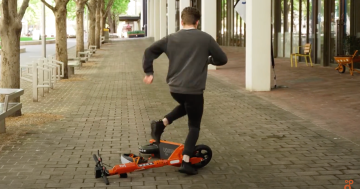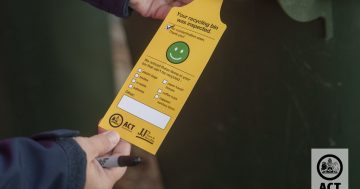
Remember those days? Canberra has been eerily during the lockdowns of the last two years. Photo: Thomas Lucraft.
Exactly two years ago today, the ACT recorded its first case of COVID-19.
Nobody knew what would come next, nor that 731 days later, daily case numbers would still be reported.
Since then, 37 Canberrans have lost their lives with the virus.
There have been other losses, too. Jobs, weddings, events, businesses, schooling. Funerals have gone ahead with few mourners allowed to attend. Mothers have given birth without family to celebrate.
But there have been periods of normality – like when the ACT managed a COVID-free year.
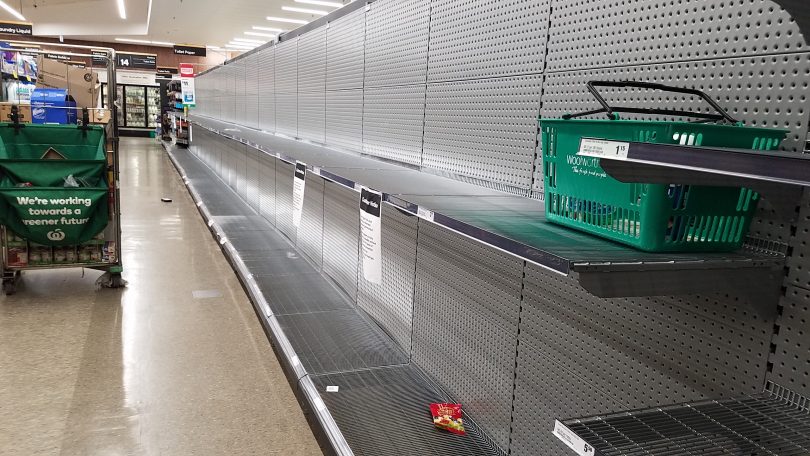
Bare shelves at the supermarket were a regular feature throughout the pandemic. Photo: Communities@Work.
After the first case was detected, authorities called for “calm”. But panic had already set in as international borders slammed shut and cases emerged around the country. Groceries flew off supermarket shelves and major events were cancelled.
Four days later, the ACT Government declared a public health emergency. It was initially in place for five days.
It hasn’t been lifted since, although the government is working on COVID-specific legislation to be debated later this month.
More cases were detected in the following days and on 30 March, the ACT recorded the first death with COVID-19 – a woman in her 80s.
Things closed gradually and services were scaled back. Schools went online.
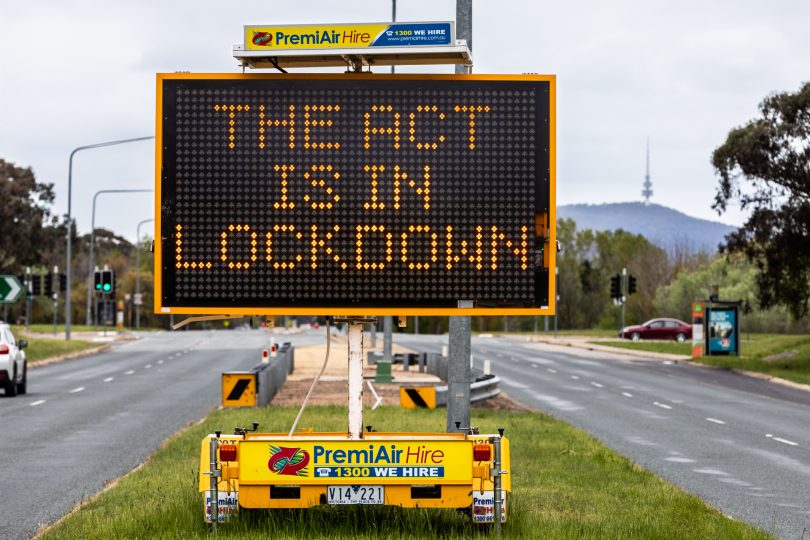
The ACT went into its first lockdown days after our first COVID-19 case. Photo: Michelle Kroll.
A first ‘lockdown‘ was called in early April as Chief Minister Andrew Barr gave the first of many economic shots in the arm to the Territory.
The government prepared itself for the worst as dramatic scenes took place around the world. Schools went online for the start of term two but a program of ‘school hubs’ for children of essential workers descended into chaos.
By the end of April, the ACT was the first Australian jurisdiction to be free of all known COVID-19 cases.
From May onwards, kids returned to school and we were back at the pub in winter. In the same month, it was revealed Canberrans were already fed up with COVID-19 coverage. Local life felt normal but you’d struggle to leave the ACT as travel to other jurisdictions was repeatedly interrupted.
The ACT’s deficit blew out to hundreds of millions of dollars.
Early 2021 was marked by the vaccine ‘stroll-out’. But it ‘wasn’t a race’ and there was no urgency, although there were many ‘teething issues‘. The Territory’s first shot was administered on 22 February.
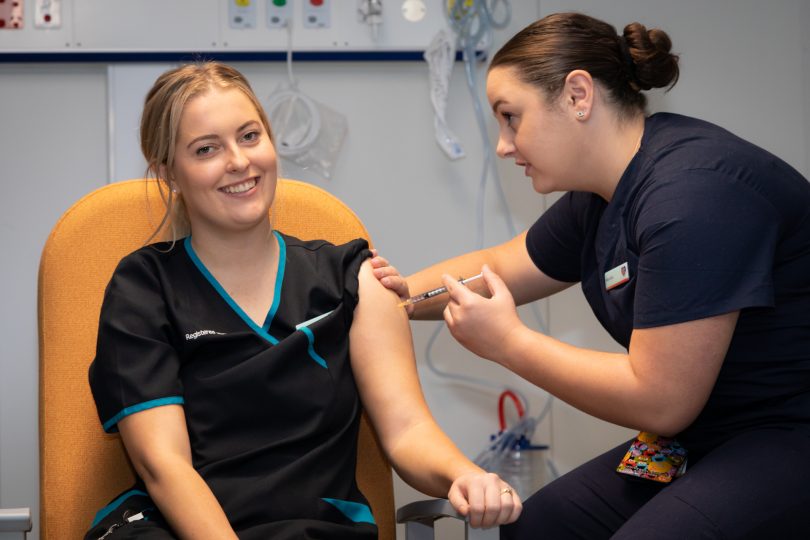
Registered nurse Maddy Williams – the first Canberran to get the Pfizer vaccine – and her colleague Nikoletta Karagiannidis. Photos: Michelle Kroll.
In July – almost one month to the day before the Territory recorded a positive case, the ACT celebrated being COVID-free for one year.
But then, in a month eerily reminiscent of early 2020, major events began to be cancelled throughout July last year due to outbreaks in NSW and Victoria.
The blame game was played with vicious rumours about the man who first tested positive in the ACT.
As if we hadn’t learned, panic buying set in. School went online again.
This time, a hard and fast lockdown week-long lockdown was implemented – although some escaped to the coast.

Some Canberrans escaped to the coast on the day lockdown was declared. Photo: File.
A seven-day lockdown quickly stretched into more than two months with the more infectious and more deadly Delta variant proving itself to be more of a challenge than the first wave.
The most vulnerable pockets of Canberra were hit. Public housing communities, the prison, aged care, children. Business support was quick to arrive, although it was often declared inadequate.
Exposure sites grew rapidly and Canberrans woke in the dead of night to get tested, queuing for hours.
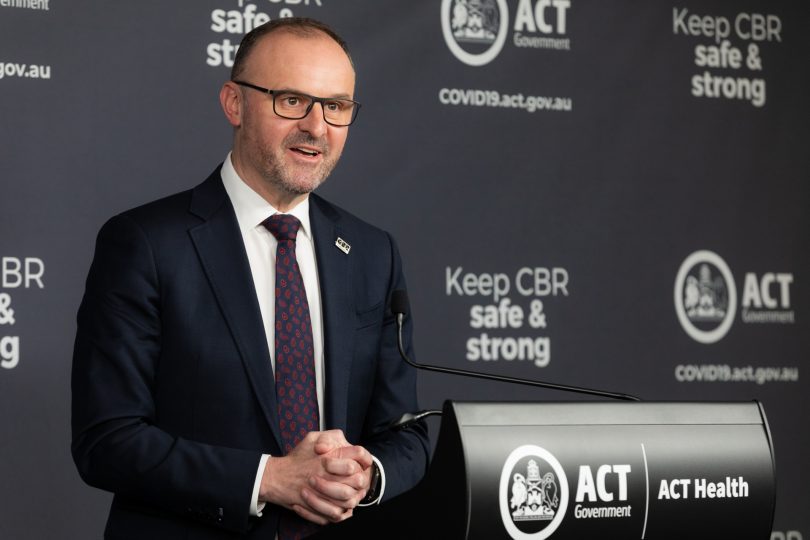
Chief Minister Andrew Barr held daily ‘COVID’ press conferences throughout the August lockdown. Photo: Michelle Kroll.
Daily COVID-19 press conferences marked this lockdown as people waited anxiously for news. Chief Minister Andrew Barr said he wouldn’t stand and ‘glibly’ announce casualties but later had to report deaths.
Canberra’s porous borders and its geographical position within NSW became a topic of discussion – and who could forget the ‘poo-gate’ war of words between Mr Barr and former NSW Deputy Premier John Barilaro?
The Territory also held its breath as it was revealed a baby in special care in hospital had tested positive.
Vaccination efforts were ramped up in the ACT and gradually the health narrative shifted from waiting for ‘COVID-zero’ to accepting cases and counting on the jab to get us out.
Lockdown did come to an end, but ‘recovery’ was uneven and short-lived.
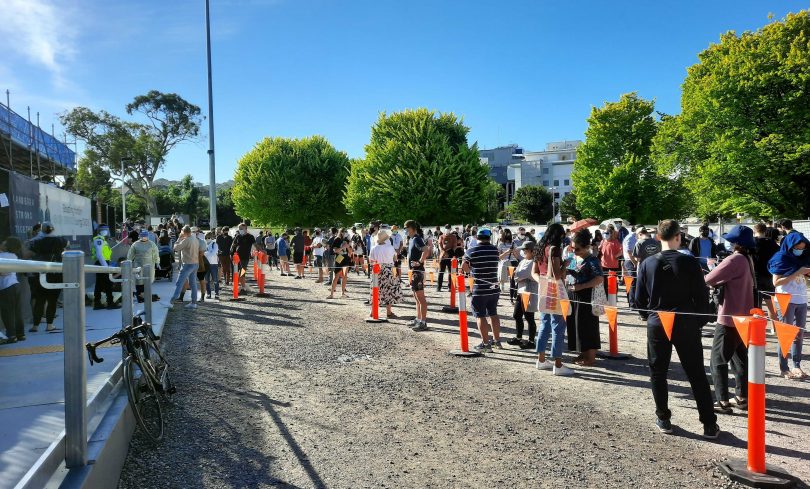
Long queues at ACT Government testing clinics were recorded in the lead up to Christmas. Photo: Ian Bushnell.
In December, Omicron reared its ugly head in the Territory.
There was no lockdown this time. But there was disruption. The ‘normal summer’ wasn’t normal at all. Queues at testing clinics blew out.
Early January was marked by skyrocketing daily caseloads. But the government, for the most part, stayed the course and rules were further relaxed – although hospitality was hit with restrictions.
In mid-January, it was suggested Omicron had ‘peaked’. Demand for rapid antigen tests (RATs) soared, but there were none to be had. Supply chain disruptions left shelves bare once again.
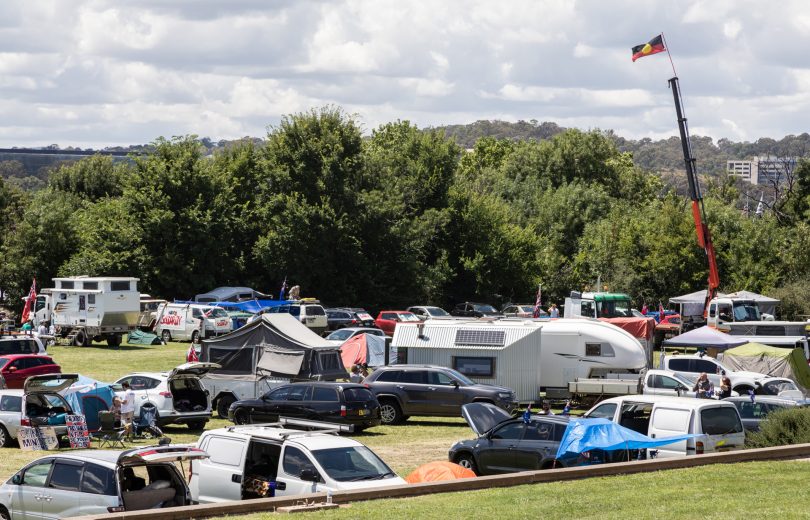
Anti-vaccine mandate protesters descended on the Territory throughout January – some are still here. Photo: Michelle Kroll.
Anti-vaccine mandate protesters descended on the capital, causing a general nuisance for Canberrans trying to go about their daily lives.
Gradually, case numbers have stabilised. The COVID-19 news has slowed. By mid-February, capacity limits were lifted on hospitality venues after 704 days, and the mask mandate followed the next week.
Businesses say they are still struggling, but the gradual return to work has commenced.
Warnings about the winter ahead continue to be issued but for the most part, life is ‘normal’ for many, although a new sub-variant of Omicorn (BA.2) is causing some concern.
So, what’s next?
Original Article published by Lottie Twyford on Riotact.






